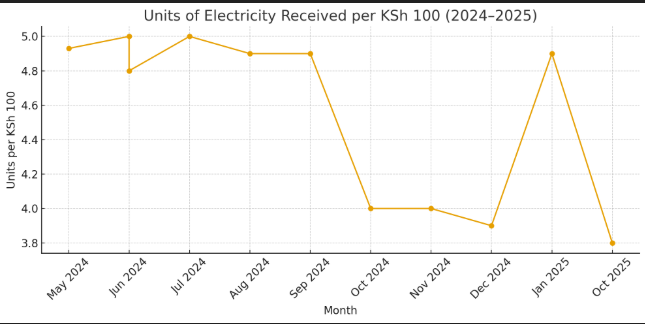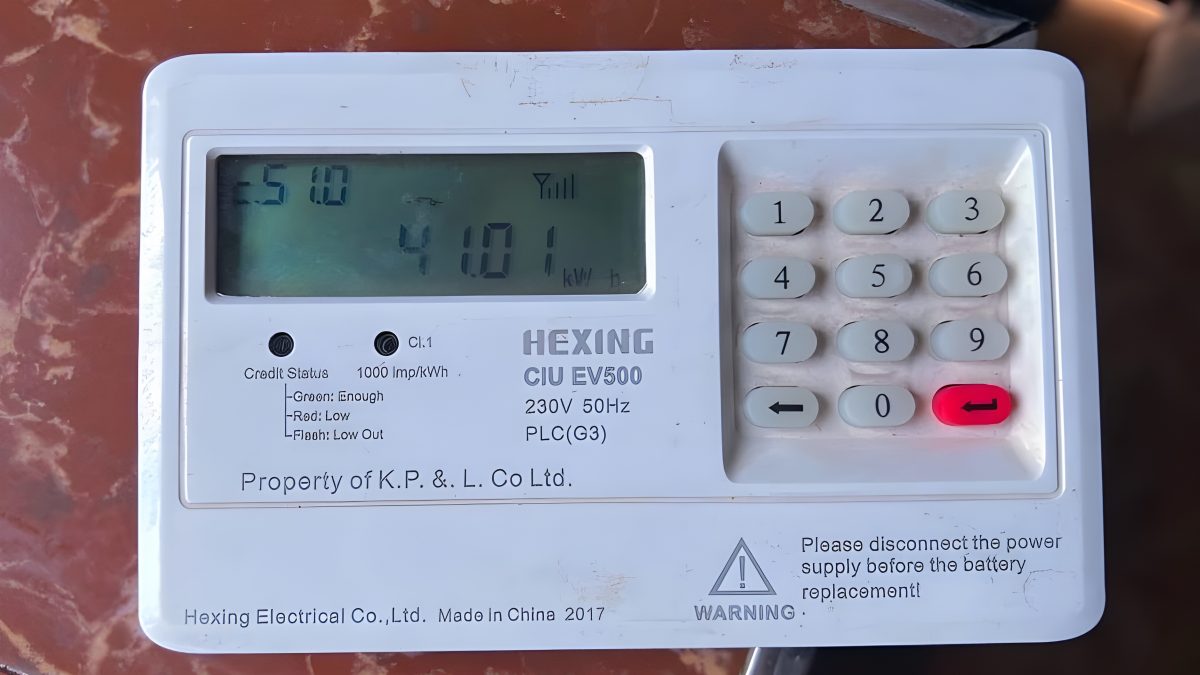By Thuita Gatero, Managing Editor, Africa Digest News. He specializes in conversations around data centers, AI, cloud infrastructure, and energy.
If you feel like your electricity tokens don’t go as far as they used to, you’re right. And we have the receipts to prove it.
Summary
-
In mid-2024, KSh 100 bought ~4.9 units
-
By late 2025, KSh 100 buys ~3.8 units
-
That’s a ~22% reduction in value — for the same money
Real Token Data (May 2024 → Oct 2025)
| Month | Units for KSh 100 | Comment |
|---|---|---|
| May 2024 | ~4.9 units | Normal baseline |
| Jun 2024 | ~5.0 units | Peak value |
| Jul 2024 | ~5.0 units | Stable |
| Aug 2024 | ~4.9 units | Stable |
| Sep 2024 | ~4.9 units | Stable |
| Oct 2024 | ~4.0 units | Sharp drop |
| Nov 2024 | ~4.0 units | Drop sustains |
| Dec 2024 | ~3.9 units | Drops again |
| Jan 2025 | ~4.9 units | Temporary spike |
| Oct 2025 | ~3.8 units | Lowest point |
Read Also: How Many Token Units Do You Get for KES 500 in Kenya? (2025 Update)
Why Did Tokens Get More Expensive?
Your bill didn’t “increase”, your value shrank.
The real drivers:
| Factor | Effect |
|---|---|
| Fuel cost adjustment | Increased pass-through cost |
| Forex adjustment | Dollar pressure → higher levies |
| Taxes & fees | Quiet monthly adjustments |
| EPRA tariff updates | Cost-recovery cycle |
| Government policy | Consumer pays more of the load |
How Much Worse Is It?
If your house uses 300 units/month:
2024 cost equivalent: ~60 × KSh 100 tokens → ~300 units
2025 cost equivalent: You now need ~79 × KSh 100 tokens to get the same ~300 units.
Extra cost per month
= ~KSh 1,900 more every month
For the average Kenyan household, the rising cost of electricity is a meaningful annual expense. Based on current token trends, the increase in electricity tariffs translates to roughly KSh 22,800 more per year compared to early 2025. That means families are paying almost an extra KSh 2,000 per month for the same amount of power, without any improvement in consumption or lifestyle. The cost of simply keeping the lights on and running basic appliances.
Households are now cutting back on appliance usage and becoming more conscious of energy efficiency just to maintain the same living standards. The extra KSh 22,800 represents money that could have gone to groceries, school fees, transport, or savings, instead, it’s absorbed by electricity costs. As the country continues to face currency pressures, policy adjustments, and energy sector levies, monitoring token price changes and planning ahead has become essential for every Kenyan household.



